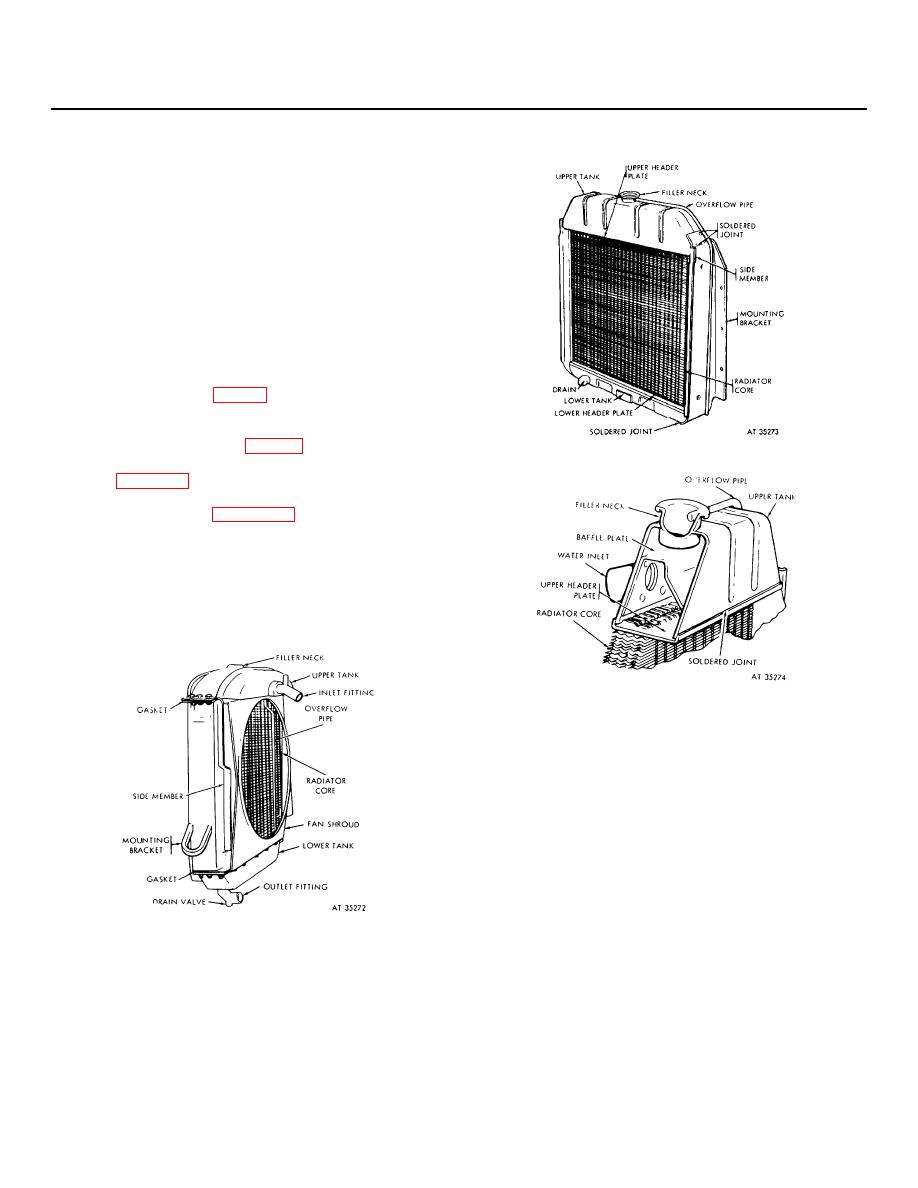 |
|||
|
|
|||
|
|
|||
| ||||||||||
|
|
 CHAPTER 3
REPAIR OF RADIATOR
Section I. RADIATOR CONSTRUCTION
3-1. GENERAL
a. The radiator of a motor vehicle is an essential
element of the cooling system. It must function correctly if
the engine is to escape serious damage from overheating.
An engine is cooled by circulating water which passes
through the cylinder block. It draws out the heat and then
releases it to the air while flowing through the radiator. If
this circulation is hindered or coolant leaks from the
radiator, immediate repairs must be made to protect the
engine.
b. Automobile, truck, and tractor radiators consist of
two water tanks (upper and lower) joined by a core which
does the actual cooling (fig 3-1). Water from the cylinder
block usually enters the upper tank through the inlet, flows
through the core, and leaves by lower tank. A 3/8-inch
overflow pipe in upper tank (figs 3-1, 3-2 and 3-3) carries
Figure 3-2. Stamped metal radiator.
away excess steam or water. In the radiator assembly
shown in figure 3-1, cast-metal tanks are bolted to the side
members. Gaskets between the tanks and core make a
watertight connection. Figure 3-2 illustrates a stamped
metal radiator formed by soldering drawn or stamped
metal tanks to the radiator core. The side members are
straps of sheet steel soldered to the upper and lower
tanks. This much lighter construction has generally
replaced the cast metal type. In passenger cars and light-
duty trucks, where it is usually concealed by the hood and
radiator grille.
Figure 3-3. Stamped metal radiator tank (cutaway).
3-2.
Water Tank
Almost all radiator tanks are cast or stamped in one piece
to reduce the number of potential leaks. A baffle plate in
the upper tank, below the filler neck,
Figure 3-1. Cast metal radiator.
3-1
|
|
Privacy Statement - Press Release - Copyright Information. - Contact Us |